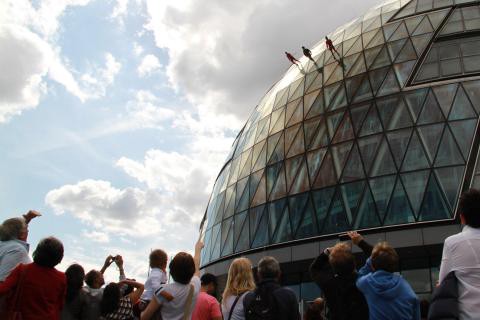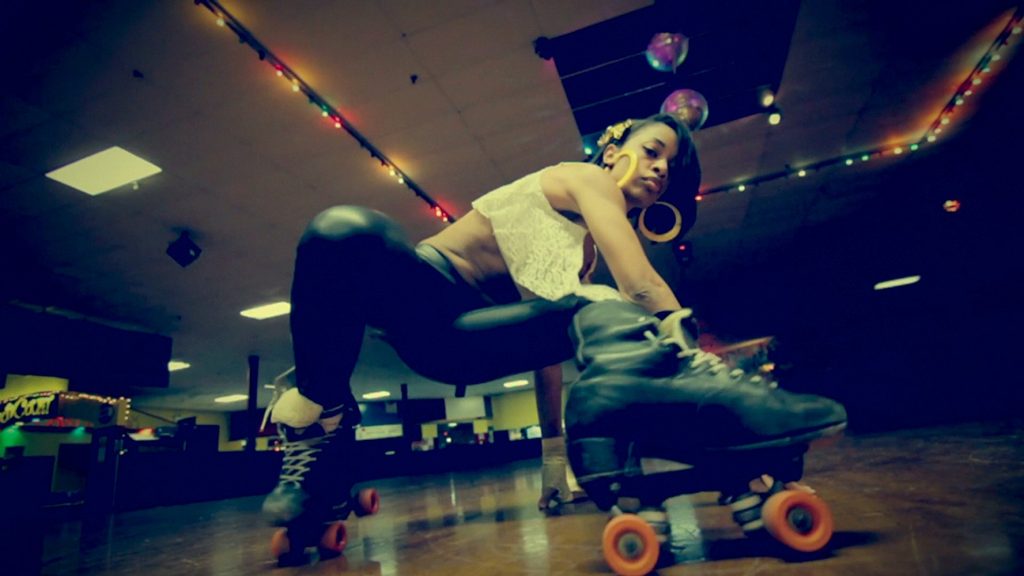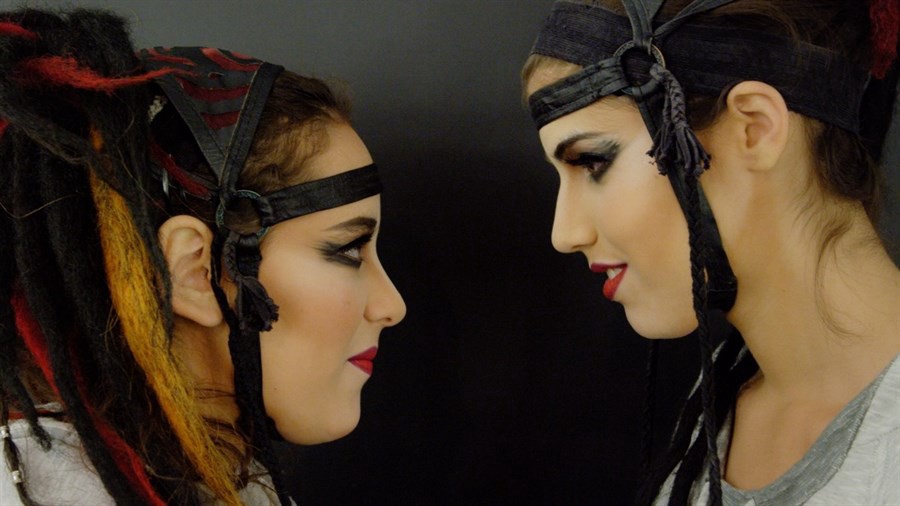Elizabeth Streb is not just a choreographer; she is an extreme action architect. Documentarian Catherine Gund’s Born to Fly traces the evolution of Streb’s movement philosophy — she pushes herself and her company from the ground, to the wall, to the sky. Gund’s film asks: Why is one person’s circus another person’s dance? One dancer’s gorgeous flight another dancer’s stunt work? Why call it art? Why choreograph it? Why have a role in performing it? How might a film inspire a broad audience, hungry for a more tactile and fierce existence in the world?
Gund is the founder of Aubin Pictures and an Emmy-nominated producer, director, writer and organizer. Her media work focuses on the arts, LGBT issues, the environment, and other social justice issues.
Born to Fly will debut at SXSW on March 8.
Please give us your description of the film.
Elizabeth
Streb leaps tall buildings in a single bound. Not exactly, but she’s always
pushing for it in her mind and in her sketchbook, which is a driven, random,
and brilliantly complicated place. She just hasn’t yet made the machine that
will catapult her, or more likely, her dancers that far. She hasn’t finished
calculating the heft of a body falling from a truss 40 feet in the air. But she
has coerced a dancer/body into falling from 30 feet up in the air.
What happens
next? Streb has great aspirations, rough joy, and eerie recollections. She will
not stop until she explodes into dust when her aging, crooked body is all used
up. Until then, she’ll fall harder, climb higher, leap without hesitation. And
she’ll keep pushing others to their own limits, all beyond age, gender, injury,
or even what seems to be against her dancers’ better judgment. Born to Fly zooms in on risk and cost and finally
pushes viewers to calculate if the sensation we earn from submitting is worth
it. And asking how much more we can take.
What drew you to this story?
I could see in Streb a powerhouse, a searching, restless,
angsty, and brilliant woman. I love how her work makes me feel like I’m
stronger than I act, like I have more in me than I think, that I too can leap a
tall building in a single bound. I value the power and necessity of art in
practice, and I’m eager to learn what I can from interacting with its
practitioners. I wanted to engage others in my efforts to understand, so I
chose to share what I could about Streb and her work. I’m looking forward to
continuing the conversation with audiences at SXSW.
What was the biggest challenge in making the film?
Happily, we were able to turn our biggest challenge into our
greatest opportunity. We had an overwhelming amount of textured and surprising
material to work with, including 300 hours of archival footage shot on various
formats. We had access to a gorgeous variety of photos of Elizabeth since
childhood and many of her company from the 80s to now, as well as to the layers
of her colorful and fascinating sketchbooks. We filmed wide shots and slo mo
and many angles on her theatrical piece called Forces,
in addition to breakfasts, dinners, and commutes. We had so much footage that
we had to nearly shovel ourselves out from the boxes of 3/4" tape, mini DVs,
hard drives, DVDs, Betacam and even VHS masters.
A million different films
could have grown out of this material. Taming the beast with my editor, and the
input of many smart and generous friends over the last few months, was
harrowing at times, but we came up with a narrative and a look, and finalized
one of those hundreds of ways to tell this particular story. Now, of course, it
feels like the one and only way it could have been told.
What advice do you have for other female directors?
Find your community, in your work life and as the subject of
your films. Your own community provides the scaffolding for our searchings, the
process of making films. The group that came together to make Born
to Fly is
mostly women with a few good men strategically mixed in, a team of true
artists, people invigorated by the challenges and inspired by the
possibilities. If you want to work alone, this is probably not your best field.
Definitely look into Chicken and Egg Pictures, which supports women filmmakers
with grants and mentorship and models the power of collective action and
community-building instead of pitting one film(maker) against another — they
cross-pollinate.
Furthermore, community can provide solid fodder for stories on
film. At times, Elizabeth’s studio can feel like the land of misfit toys. Thank
god the dancers and Elizabeth and all their friends (I would include myself in
this gathering) have found each other. People literally to catch you as you
fall. Born to Fly foregrounds
a survival mechanism while celebrating the inclination to need such a thing.
You can’t take this dare without a community to catch you. Push the limits of
age, gender or injury (or anything else!), but don’t be afraid to enlist the
helping hands.
What’s the biggest misconception about you and your work?
My films may be considered niche films — queer, environmental,
political, even calling them “documentary” implies a limited audience — but I
make my films for everyone. I know that sounds cliched, but it’s true. If we had
a more media-literate society, we’d all be able to use a wider range of films
for different purposes.
If films were a part of a conversation and not
looked at solely for entertainment, we as viewers could engage with them on
more levels. For example, my last film [What’s on Your Plate?] about kids and food politics was used by
the Queens Museum in their English as a Second Language classes. They showed
the film to a lot of people, mostly women, who needed basic vocabulary about
eating, cooking, children, health, and every-day life and they chose a film
with a strong “message” about economic access and the environment. What could
be gained by exploding limited classifications?
Do
you have any thoughts on what are the biggest challenges and/or opportunities
for the future with the changing distribution mechanisms for films?
Now filmmakers don’t have to depend on traditional channels for
putting their work out there. This allows for more diverse voices, as long as
filmmakers can position themselves to be heard above the cacophony. It’s good
in many ways, but there’s more distraction. At the same time, I see more docs
in the multiplex. Doesn’t the under-21 crowd still entertain a social aspect in
movie-going? I know they want to get out of the house.
Name your favorite women directed film and why.
I’ve always been inspired by Julie Dash’s work, starting with
the brilliant Illusions and, of course, Daughters
of the Dust. She not only honored her own vision and style,
clearing a new space, but she gracefully and generously commandeered a powerful
ship of actresses and actors, artists, filmmakers, and crew.
I was lucky enough
to work with her in 1991 on a piece with the Urban Bush Women called Praisehouse. That was many lifetimes ago, but
some things stay with you forever. I still have a strip of dusty white tape,
used to label a camera reel, which says “AIN’T NUTTIN DIS FUNKY.” That’s how
I’ve felt about filmmaking ever since.







